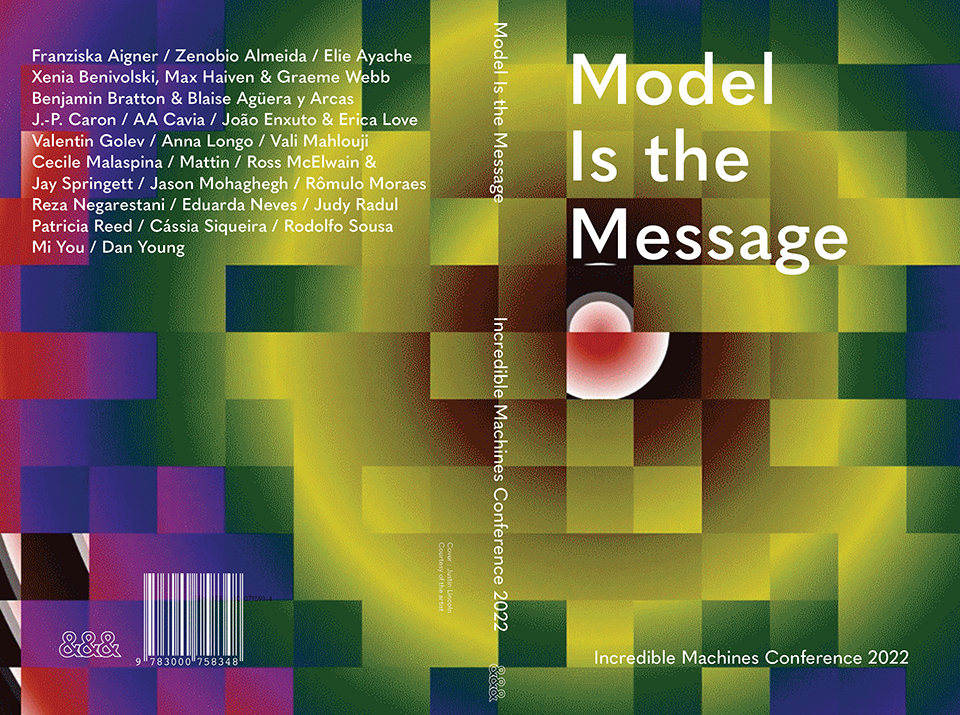
Model is the Message: Incredible Machines Conference 2022 examines the possibilities and limits of models as they pertain to technological developments in the fields of computer science, design, architecture art, and literature. Contributors, in their own way, reformulate the function of models not just as developmental blueprints but as technologies to project innovative ideas for future access and implementation.
As the culmination of the Incredible Machine Conference 2022 held last September, the contributions incorporate many of the conversations that took place during the event. Opening with “The Model is the Message” by Benjamin Bratton and Blaise Agüera y Arcas as the main motivator for many of the discussions, the texts range from exploring the role of modeling for understanding and implementing intelligence to how certain models shape our contemporary experience of the world while addressing questions of aesthetics, technology, media, cybernetics, curating, political economy, the planetary, and the limits of modeling as such.
The volume includes contributions by Franziska Aigner / Zenobio Almeida / Elie Ayache / Xenia Benivolski, Max Haiven & Graeme Webb / Benjamin Bratton & Blaise Agüera y Arcas / J.-P. Caron / AA Cavia / João Enxuto & Erica Love / Valentin Golev / Anna Longo / Vali Mahlouji / Cecile Malaspina / Mattin / Ross McElwain & Jay Springett / Jason Mohaghegh / Rômulo Moraes / Reza Negarestani / Eduarda Neves / Judy Radul / Patricia Reed / Cássia Siqueira / Rodolfo Sousa / Mi You / Dan Young.
Mohammad Salemy (ed.), The Model is the Message. “The Model Is the Message” conference and book were developed through a partnership between The New Centre for Research & Practice and Richmond Art Gallery Vancouver and made possible by the generous support of the Canada Council for the Arts.
Cover: Modulating Ramp, Justin Lincoln, 2022
Publication: August 2023
228pp., 11.4×17.8cm
ISBN: 978-3-00-075834-8
25.00 USD + tax ($4.75) Shipping + ($12.00) = $41.75